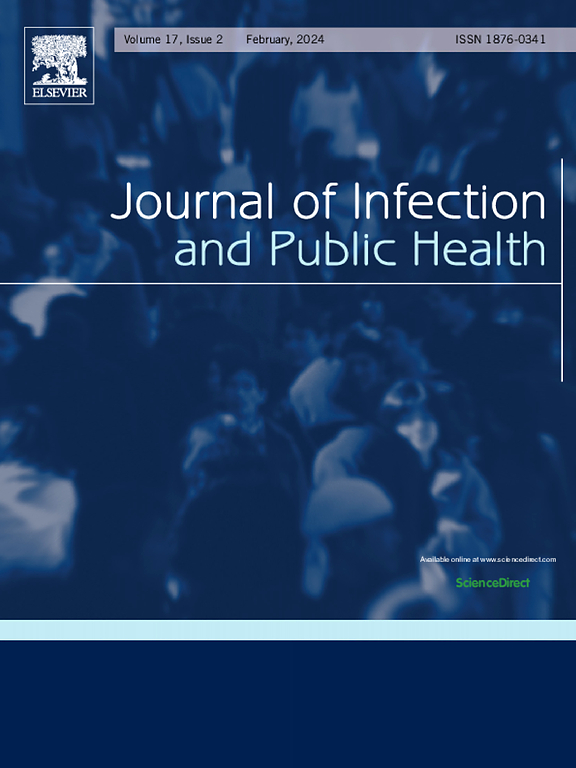Metagenomic next-generation sequencing (mNGS) identified Clostridium perfringens infection presenting as acute hemolysis after surgery
IF 4.7
3区 医学
Q1 INFECTIOUS DISEASES
引用次数: 0
Abstract
Clostridium perfringens (C. perfringens) septicaemia is a rare, but rapidly fatal infection, characterized by massive hemolysis. In numerous documented instances, the patient was not diagnosed in time due to the absence of typical clinical features. In order to enhance diagnostic accuracy, metagenomic next-generation sequencing (mNGS) has been adopted as a novel approach to pathogen identification.
Case presentation
A 67-year-old male who had undergone transcatheter arterial chemoembolization (TACE) surgery four days earlier presented with severe anemia, and laboratory investigations disclosed intravascular hemolysis. Swift and accurate identification was imperative, resulting in the confirmation of mNGS analysis, his medical history, clinical symptoms, physical signs, additional tests, and C. perfringens as the causative pathogen of hemolysis. After successful treatment with effective antibiotics, the patient recovered and was discharged from the hospital after 19 days.
Conclusions
mNGS achieves expedited diagnostic turnaround time through rapid pathogen identification, significantly surpassing conventional culture methods. This may enable the diagnosis of atypical cases of C. perfringens infection, which can cause rapid systemic shock, renal failure, intravascular hemolysis, and even death.
新一代宏基因组测序(mNGS)鉴定出产气荚膜梭菌感染,在手术后表现为急性溶血
产气荚膜梭菌败血症是一种罕见但迅速致命的感染,其特征是大量溶血。在许多有记录的病例中,由于缺乏典型的临床特征,患者没有及时诊断。为了提高诊断准确性,新一代宏基因组测序(metagenomics next-generation sequencing, mNGS)已成为一种新的病原体鉴定方法。病例介绍:一名67岁男性,4天前接受了经导管动脉化疗栓塞(TACE)手术,出现严重贫血,实验室检查发现血管内溶血。迅速准确的鉴定是必要的,结果确认了mNGS分析、病史、临床症状、体征、附加检查,并确认了产气荚膜梭菌是溶血的致病病原体。经有效抗生素治疗成功后,患者痊愈,19天后出院。结论ngs通过快速病原菌鉴定,加快了诊断周转时间,显著优于传统培养方法。这可能有助于诊断非典型的产气荚膜原梭菌感染病例,这种感染可引起迅速的全身休克、肾功能衰竭、血管内溶血,甚至死亡。
本文章由计算机程序翻译,如有差异,请以英文原文为准。
求助全文
约1分钟内获得全文
求助全文
来源期刊

Journal of Infection and Public Health
PUBLIC, ENVIRONMENTAL & OCCUPATIONAL HEALTH -INFECTIOUS DISEASES
CiteScore
13.10
自引率
1.50%
发文量
203
审稿时长
96 days
期刊介绍:
The Journal of Infection and Public Health, first official journal of the Saudi Arabian Ministry of National Guard Health Affairs, King Saud Bin Abdulaziz University for Health Sciences and the Saudi Association for Public Health, aims to be the foremost scientific, peer-reviewed journal encompassing infection prevention and control, microbiology, infectious diseases, public health and the application of healthcare epidemiology to the evaluation of health outcomes. The point of view of the journal is that infection and public health are closely intertwined and that advances in one area will have positive consequences on the other.
The journal will be useful to all health professionals who are partners in the management of patients with communicable diseases, keeping them up to date. The journal is proud to have an international and diverse editorial board that will assist and facilitate the publication of articles that reflect a global view on infection control and public health, as well as emphasizing our focus on supporting the needs of public health practitioners.
It is our aim to improve healthcare by reducing risk of infection and related adverse outcomes by critical review, selection, and dissemination of new and relevant information in the field of infection control, public health and infectious diseases in all healthcare settings and the community.
 求助内容:
求助内容: 应助结果提醒方式:
应助结果提醒方式:


